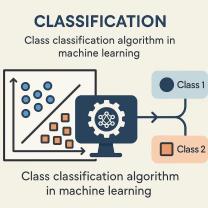What is a forward-reverse cascade filter?
Forward-reverse cascade filters, also known as double-cascade filters, are a type of electronic filter configuration commonly used in signal processing and audio applications. They consist of two cascaded filter sections designed to provide specific filtering characteristics. Let's explore how forward-reverse cascade filters work:
Filter Cascading
Cascading filters involves connecting multiple filter stages in sequence. Each stage attenuates or passes certain frequency components of a signal, resulting in a combined filtering effect. The forward-reverse cascade configuration is a specific arrangement of filter stages that offers unique advantages.
Forward Cascade
In the forward cascade section of the filter, the input signal is passed through one or more filter stages in series. Each stage attenuates specific frequency ranges, resulting in an initial filtering effect. Forward cascading helps in removing unwanted noise and enhancing desired signal components.
Reverse Cascade
The reverse cascade section follows the forward cascade. In this stage, the signal from the forward cascade is passed through another series of filter stages, but in reverse order. Reverse cascading further refines the signal by suppressing remaining unwanted frequencies and fine-tuning the desired frequency response.
Advantages of Forward-Reverse Cascade Filters
Forward-reverse cascade filters offer several advantages:
1. Enhanced Filtering Precision
The dual-stage filtering process allows for more precise control over the frequency response. It helps in achieving a tailored response that meets specific application requirements.
2. Improved Signal-to-Noise Ratio
The cascading of filter stages results in improved noise reduction, leading to a higher signal-to-noise ratio in the filtered output signal.
3. Steeper Roll-Off Characteristics
Forward-reverse cascade filters can achieve steeper roll-off characteristics, which means that unwanted frequencies are attenuated more quickly outside the desired passband.
4. Customizable Frequency Response
By selecting appropriate filter designs for each cascade section, engineers can customize the frequency response to match specific application needs.
Applications
Forward-reverse cascade filters find applications in various fields, including audio processing, telecommunications, and biomedical signal analysis. They are used to improve signal quality, remove interference, and enhance overall system performance.
Conclusion
Forward-reverse cascade filters are a powerful filtering configuration that combines the benefits of both forward and reverse cascading. This design offers enhanced precision, noise reduction, and customizable frequency responses, making them a valuable tool in signal processing applications.













